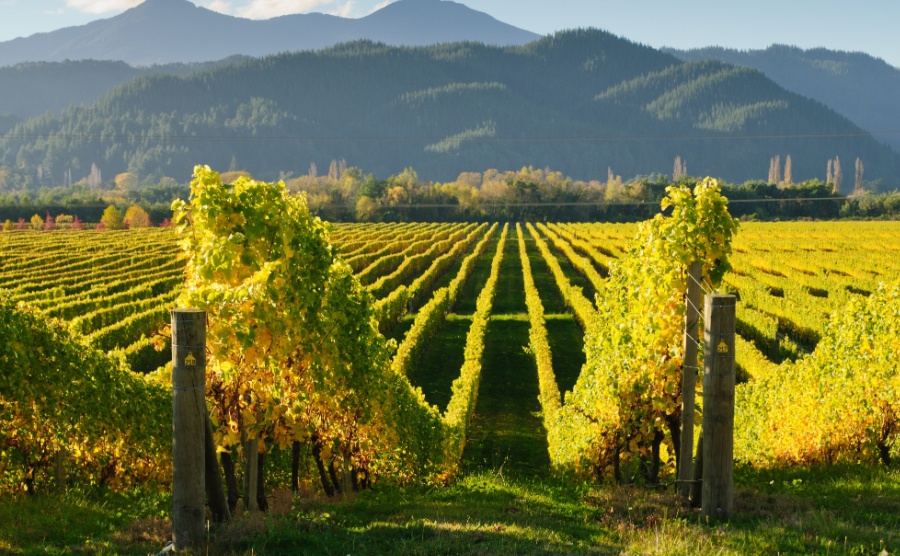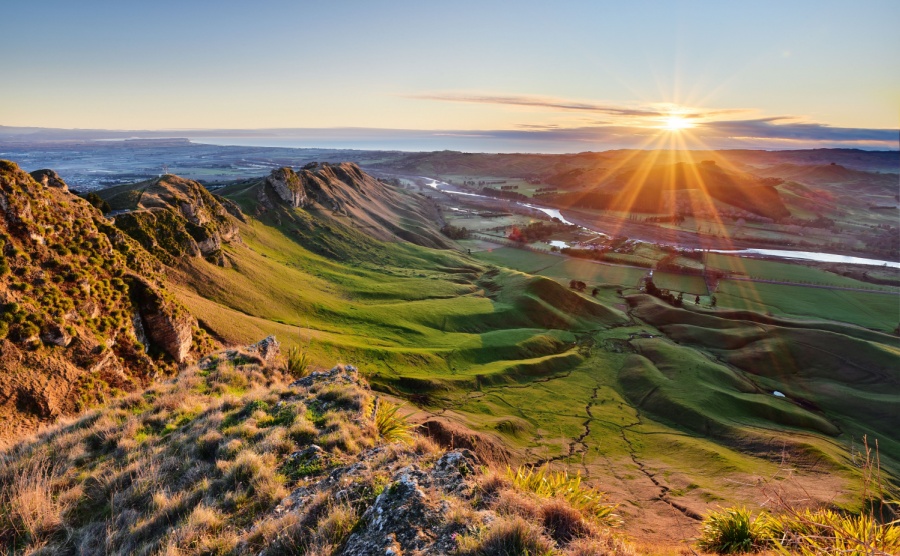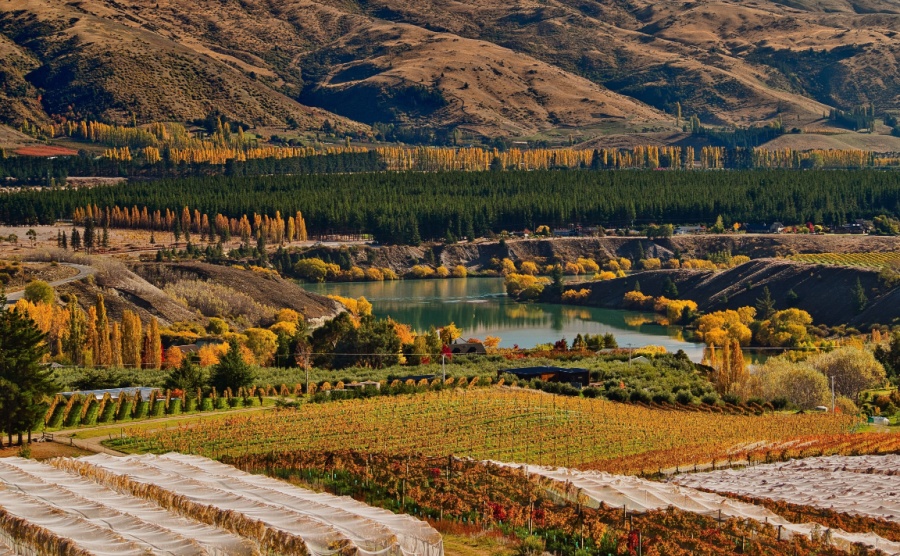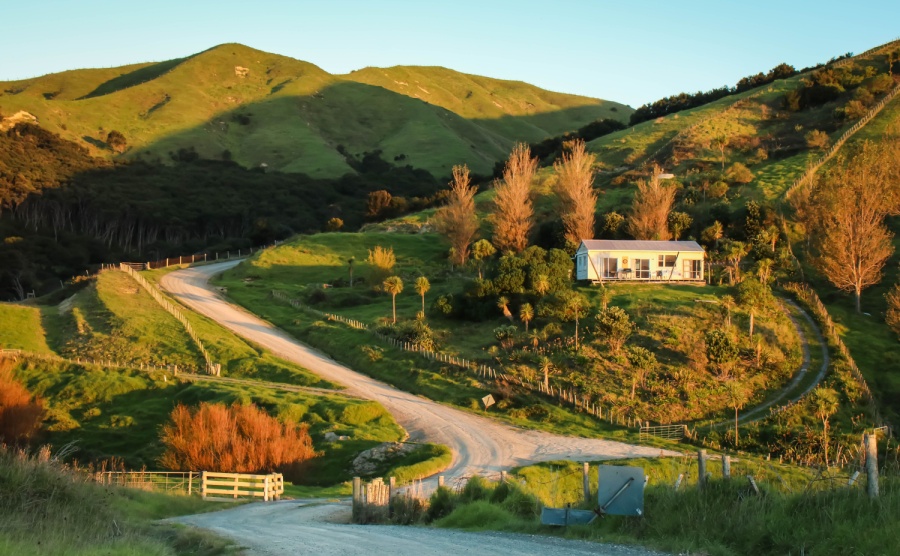You probably never thought that you would take home-hunting advice from a grape. But they do know a thing or two.
What they like in an area coincides with what a lot of people like in an area.
The grapes thrive in New Zealand’s sunniest regions – an indisputable tick for home hunters who are seeking maximum rays.
We have looked at four of New Zealand’s most celebrated wine regions. Each is super sunny, home to gorgeous vineyards, and promises an outdoorsy lifestyle.
The question is: will you thrive like a grape ready to be plucked for a Sauvignon Blanc or are you more of a Merlot?
Marlborough, home to Sauvignon Blanc
If your top choice of poison is a Sauvignon Blanc, then perhaps you’ll feel most at home in New Zealand’s largest wine-growing region, Marlborough. You’ll find it in the north-eastern part of South Island. With more than 30 cellar doors, you can take a stroll or sip through your new home.
It is not just Sauvignon Blanc that Marlborough does so successfully either. The Renaissance and Moa craft beers are delicious. Plus, Marlborough is the perfect place to tuck into fresh seafood, including green-lipped muscles. It is also great for heading to local markets on a weekend to fill your pantry with artisan goods.
If you want to invite friends over to experience the very best of food and wine that your new home has to offer, invite them during the Marlborough Wine and Food Festival, the longest running of its kind in New Zealand.
From the mountains to the coast, Marlborough is incredibly scenic and there’s lots of opportunity to spend time outdoors. If you’re a hiker or cycler, you may enjoy the Queen Charlotte Track, which stretches 70km from Ship Cove to Anakiwa. You can spy beautiful native birds on your way.
Weather: If you, like the grapes, are a sun-seeker, then you’ll enjoy 2,500 hours of sunshine a year (approximately 1,000 more than in the UK). Marlborough experiences long, dry summers and cold winters.
Property market: It is possible to find an old-fashioned, affordable cottage nestled in a vineyard, if that is your dream. The most expensive neighbourhood is Wither Hills, in Blenheim, the region’s main town.
Hawke’s Bay, home to robust reds
Fancy a little Cabernet Sauvignon? Or a Merlot? How about Syrah?
Located on the eastern coast of New Zealand’s North Island, New Zealand’s own official tourism website says, “there are two words that best describe Hawke’s Bay and they are Wine Country”. Hawke’s Bay is where wine growing in New Zealand all started. Make the most of it by going on taste tours and walks through its 72 vineyards and 30 cellar doors. Plus, the Hawke’s Bay Trails, a haven for cyclists, is made up of 200km of tracks, many of them through the vineyards. For maximum sipping, feasting and celebrating of the region’s delights, add the twice-a-year Food and Wine Classic Event to your calendar.
Outside of strolls and cycles, Hawke’s Bay is a fantastic place for fishing, golfing and wildlife spotting.
As well as its wine, Hawke’s Bay is known for the vibrant city of Napier. After it was destroyed by an earthquake in 1931, the city was rebuilt beautifully to an Art Deco design. Not only is it a visual delight, but it is also abuzz with shops, restaurants, cultural attractions and the Marine Parade.
Weather: Hawke’s Bay enjoys a temperature climate, not too cold and rarely too hot. It is one of the sunniest regions in New Zealand.
Property market: If you’re seeking a high-end property, then look to Napier City, especially Jervoistown, where the gorgeous homes come with a high price tag. But there are also opportunities to find more affordable villas in the countryside.
Don’t spend any money on your move abroad until you’ve read The Currency Guide to Emigration, free to download.
Central Otago, home to Pinot Noir
The world’s southernmost wine region, Central Otago sits at the bottom of New Zealand’s South Island.
Most famously home to delectable Pinot Noir, Central Otago produces a variety of white wines and pink rose. The focal points for white production are Cromwell, Basin, Bendigo, Bannockburn, Gibbston, Alexandra and Wānaka. The region is known for cellar dining, farmers markets and fruit picking. Your fridge will have never looked better.
Central Otago boasts of truly spectacular landscapes: rugged mountains, deep gorges, and serene lakes. As such, it is perfect for hiking, fishing, cycling, and even motorsports. You can even ski on the slopes of Cardona and Coronet Peak.
Plus, Central Otago is home to Queenstown, the adventure capital of New Zealand. Whether adventure means partying into the small hours or zipping down a wire (though probably not one after the other, your insides might protest), Queenstown provides.
Historically, Central Otago was a gold mining town, and there are a few small towns that have retained their charm from this era, such as Ophir, Bannockburn, Clyde and Naeby.
Weather: Central Otago experiences the most well-defined seasons in all of New Zealand. They enjoy the hottest, driest summers and the coldest winters. Summers see highs of 25°C while winters are characterised by misty mornings and possible snow.
Property market: The choice in Central Otago is varied. You could go for a ski chalet, a beautiful lakeside home, a posh penthouse, or a lovely older farmhouse. Cromwell and Alexandra offer budget-friendly property options while Arrowtown is the most expensive.
Gisborne, home to Chardonnay
Located on New Zealand’s North Island, Gisborne is not only the country’s Chardonnay capital, but also one of the first places to see the sunrise each day. A romantic notion. It is superb for visiting wine cellars, trips to cute cafes, and picking up delicious bites from the farmer’s market.
Gisborne is more remote than the other areas on this list. Life in Gisborne is unhurried, nature-loving, and crucially, sun-kissed. Cyclists will enjoy the Gisborne Rail Bike Adventure, which is along an abandoned coastal railway. Surfing and diving are particularly popular pastimes too, with Makorori Beach promising consistent, brilliant swells. Plus, the region has a large Māori population, who have made a huge contribution to the local creative scene.
Weather: Summers are warm and dry, with highs of 25°C in January. Winters tend to be mild, with highs of 14°C in June, but nights are colder, and snow does occur on occasion. The first to see the sun, Gisborne also experiences over 2,000 hours of it a year.
Property market: As it does not have the status of other holiday destinations and is a little more out of the way, Gisborne is a great place to look for a budget-friendly home. You’ll find a mix of homes surrounded by vineyards, beachfront properties and newer, urban dwellings.
You might also like:











